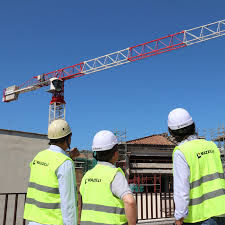
Course Description:
The Roman Construction Polyspaston crane, also known as a compound pulley system, was a crucial tool for lifting heavy objects during Roman construction. It was powered by four men working on either side of a winch or, for larger loads, a treadwheel. The treadwheel crane could lift up to 6,000 kg with half the crew, demonstrating its efficiency compared to manual lifting methods.
Key Features of Course Divine:
Career Opportunities After Roman Construction Crane:
Essentials Skills You will Develop Roman Construction Crane:
Tools Covered:
Syllabus:
Module 1: Introduction to Roman Engineering and Construction Overview of Roman civil and military engineering Importance of cranes in Roman infrastructure
Historical sources (Vitruvius, archaeological sites, reliefs) Types of Roman cranes: treadwheel, capstan, compound pulley systems.
Module 2: Principles of Mechanics in Roman Cranes Simple machines: lever, pulley, axle, and wheel Mechanical advantage in Roman lifting devices Static and dynamic load analysis Force distribution and rope tension.
Module 3: Materials and Tools Used Timber types used (e.g., oak, pine) and Roman joinery Hemp ropes, iron nails, bronze fittings Roman measuring tools and construction instruments Preservation and durability strategies.
Module 4: Design and Components of Roman Cranes Structural design: A-frame, treadwheel, beam, axle Pulleys and lifting blocks: single, double, and compound Treadwheel mechanics: size, workforce, energy output Stability and counterweights.
Module 5: Construction Techniques Blueprinting and layout of crane parts
Timber framing and mortise-tenon joints Assembly sequence: base, wheel, axle, lifting arm On-site construction considerations.
Module 6: Operational Training and Safety (Historical and Modern) Ancient operational practices and labor deployment Safety considerations: tipping, overloading, rope failure Modern safety comparisons and reenactment protocols
Risk mitigation during live demonstrations.
Module 7: Applications in Roman Architecture Lifting techniques used in aqueducts, amphitheaters, temples Case studies: Colosseum, Pont du Gard, Pantheon Urban vs. military field use of cranes Transport and logistics integration.
Module 8: Reenactment and Experimental Archaeology Modern reconstructions of Roman cranes Experimental data on lifting capacity and efficiency Collaboration with museums and universities Live demonstrations and public education.
Module 9: Maintenance, Repairs, and Innovation Wear and tear in wood and rope systems Maintenance cycles in Roman construction sites Innovations over time: from capstan to treadwheel Role of Roman crane technology in medieval Europe.
Module 10: Final Project and Certification Final theoretical test on mechanics, history, and safety Practical assessment: operating a replica crane or simulation
Group project: designing a crane setup for a specific Roman structure Certification issued upon completion with honors distinction available.
Industry Projects:
Who is this program for?
How To Apply:
Mobile: 9100348679
Email: coursedivine@gmail.com

You cannot copy content of this page